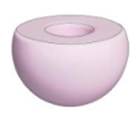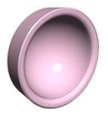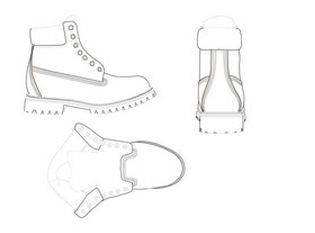Limitations In Seeking Trade Dress With Patent Protection

This article was originally published in Law360 on August 15, 2023, and is republished here with permission.
Brand owners versed in intellectual property rights management often use a combination of trade dress, trademarks and patents to protect their IP.
Multiple forms of protection can be valuable for companies in pursuing exclusivity for their products, but there are important limitations to be aware of when seeking both trade dress and patent protection.
In the U.S., trade dress protection — the look and feel of a product or packaging — is unavailable for designs that are entirely dictated by function. If a product feature is essential to the use or purpose of the item, affects the cost or quality of the item, or provides other competitive advantages, then it is considered functional and is not protectable as trade dress.
Brand owners of products that go in or on a person’s body — such as medical implants, wearable devices, footwear and other apparel — risk potential cancellation of their registrations if their trade dress is deemed to be functional.
This is of particular concern for products in these categories because, in addition to having stylized aesthetic aspects that are brand-specific, these products often have multiple features that are designed to optimize performance or fit.
Brand owners should ensure that such features are separate from the aesthetic, source-identifying features of products, or else they run the risk that their trade dress or design patent claims could be thwarted by a functionality determination. This is one reason why it is important to evaluate which types of IP rights are most suitable for innovations in these areas at the outset.
Medical Hip Joint Implants and the Color Pink
In December 2022, the U.S. Patent and Trademark Office‘s Trademark Trial and Appeal Board in its C5 Medical Werks LLC v. CeramTec GmbH decision granted C5 Medical Werks’ petition to cancel two of CeramTec’s trade dress registrations for the color pink as applied to hip joint implants.1
C5 Medical Werks argued, and the TTAB concurred, that the color pink was a functional byproduct of using chromia as a material ingredient in the manufacturing process. The TTAB’s decision factored in that CeramTec’s expired utility patent disclosed the technical benefits of using chromia to improve mechanical properties, e.g., desired hardness and fracture toughness, of the resulting hip joint implants.

Registration No. 4319095

Registration No. 4319096
CeramTec’s public statements, including its product advertising, regulatory submissions and technical literature, highlighted the technical advantages of using chromia in the manufacturing process and tied the use of chromia to the pink color of the products.
The TTAB found that CeramTec had “educate[d] the relevant market for an extended period of time that hip replacement components made from ceramic compositions including chromia (thus turning the compound pink) were superior in mechanical performance.”2
The TTAB thus concluded that the color pink was a functional feature because it was caused by the addition of a compound that benefited the functioning of the product.
Footwear Maker’s Next Steps
Footwear maker Timberland awaits a decision from the U.S. Court of Appeals for the Fourth Circuit to permit or deny trade dress protection to its Icon boot design in TBL Licensing v. Vidal.3

Timberland Application Serial No. 86634819
Timberland asserts that consumers recognize eight specific features of its boot design as identifying a unique source: a padded collar, a two-tone multi-hardness sole, a Vibram-style lug sole, an hourglass heel counter, quad-stitching, U-shaped vamp stitching, a hexagonal eyelet, and a bulbous toe box.
In a December 2022 decision, the U.S. District Court for the Eastern District of Virginia4 disagreed, finding that the boot’s design is functional because the company’s utility patents protect the construction, comfort, waterproofing and support of the boot. Timberland’s advertising also ties the claimed trade dress to specific improvements in the performance of its boots.
Timberland argues5 that the district court should have analyzed the design in its entirety rather than various elements individually. The International Trademark Association has briefed these issues in support of Timberland; other brand owners are expected to chime in as well.6
The C5 Medical Werks and TBL Licensing proceedings highlight the benefits of developing a holistic IP strategy early in product development. Research and development, marketing, and legal teams should coordinate to plan which elements of the product will be protected via trade dress, trademark and patents, and what public communications should and should not say with respect to the features of the product companies intend to serve as source-identifiers.
Combining Trade Dress and Patent Protection
Trade dress protects nonfunctional and distinctive product design features. As with a trademark or logo, the purpose of trade dress is to identify the source of the product.
Companies have registered trade dress for the shape or color of a product — such as the hourglass shape of the Coca-Cola bottle or Tiffany & Co.’s robin’s egg blue for jewelry boxes.
To get the full benefits of a trademark registration, the trade dress owner must prove that consumers recognize the product design as identifying the source of the goods. Unlike patents, there is no term limit on trade dress protection; trade dress protection can last as long as the owner continues to use the product in commerce.
The types of patents most applicable to medical and consumer goods are utility and design patents. Utility patents can cover processes, machines, manufactured goods and compositions, while design patents protect the ornamental appearance of a product.
For example, a utility patent can protect the formula of a Vitamin C serum whereas a design patent can protect the unique visual appearance of the serum’s packaging.
To maximize intellectual property protection, it can be beneficial to combine trade dress and patent protection. Trade dress and design patents can coexist and offer differing timelines and ranges of protection.
Trade dress offers potentially indefinite protection for the overall look and feel of the product design, color, or packaging, whereas U.S. design patents provide 15 years of protection from issuance for the ornamental appearance of an article.
A U.S. design patent application cannot be filed if a product has been made public or sold for more than a year. Unlike trade dress registrations, U.S. design patent applications typically remain secret until grant, allowing brands to seek protection early before their products reach the market.
In contrast, it is harder to obtain a trade dress registration for a product design when a product first launches due to the requirement to prove “secondary meaning” which typically does not vest until the product has been on the market for at least five years.
One option can be to pursue design patent registration early on in the product’s life span and then seek trade dress registration after the product has been on the market for several years and it is easier to acquire evidence of secondary meaning.
For example, Nike owns many trade dress and design patents7 for their various shoe designs and has filed numerous infringement actions against footwear competitors. Nike owns trade dress registration for the silhouette, Reg. No. 3,711,305, and sole, Reg. No. 3,721,064, of the Nike Dunk.
Nike also obtained a design patent, U.S. D804,158, for the outsole of the Nike Dunk Flyknit, and a utility patent, U.S. 8,266,749, for methods of making the Nike Flyknit upper. In the April, 2022 Nike, Inc. v. La La Land Prod. & Design decision, the U.S. District Court for the Central District of California enforced a permanent injunction against La La Land Design for their infringing Nike Dunk designs.8
Functionality Considerations When Seeking Trade Dress and Utility Patent Protection
When seeking both trade dress and patent protection, a brand owner should assess the functional aspects of a product and analyze its specific features and purpose before filing. A product whose design is dictated largely or solely by functional considerations is usually a poor candidate for trade dress, and an early assessment of functionality can avoid incurring extra costs or risking invalidation later.
If the product design is useful to the functioning or manufacturing of the product, the owner should consider patent protection. However, obtaining a utility patent can impede obtaining trade dress protection later on, because the product design will be presumed to be functional. C5 Medical Werks highlights this challenge.
Indeed, the test used by the USPTO to determine whether trade dress is functional analyzes:
- The existence of an active or expired utility patent that discloses utilitarian advantages of the registered subject matter;
- Advertising by the registrant that touts the utilitarian advantages of the subject matter;
- The availability of alternative designs; and
- Whether the subject matter results from a comparatively simple or inexpensive method of manufacture.9
Where a combination of trade dress and patent protection is desired, the content of any patent filings should be considered for its impact on the associated trade dress filing.
What a brand owner describes in their patent application matters: As noted above, the TTAB in C5 Medical Werks considered statements in the patents touting the functional advantages of the technology, among other factors.
Leveraging both trade dress and patent protection can allow brand owners — including those whose products will be worn on or placed in the body — to maximize protection using available IP tools.
As the cases above highlight, it is essential to evaluate functional aspects of such products early and before a trade dress application is filed.
Editor’s Note: Alexander Liederman, a law student at George Washington University Law School, contributed to this article. He was a summer associate at Foley.
Disclosure: Foley & Lardner is counsel for the brief of amicus curae International Trademark Association in TBL Licensing LLC v. Vidal.
——————————————————————————
1 C5 Medical Werks LLC v. CeramTec GmbH, Cancellations Nos. 92058781 and 92058796, at *95 (Dec. 6, 2022)
2 Id. at *95.
3 TBL Licensing LLC, v. Vidal, No. 23-1150 (4th Circuit, 2023).
4 TBL Licensing LLC v. Vidal, No. 1:21CV681 (Eastern District of Virginia, 2022).
5 Opening Brief of Plaintiff-Appellant, TBL Licensing, LLC v. Vidal, No. 23-1150 (4th Circuit, 2023).
6 Brief of amicus curiae International Trademark Association (INTA), TBL Licensing LLC v. Vidal, No. 23-1150 (4th Circuit, 2023). Foley & Lardner LLP is counsel for amicus curiae INTA in these proceedings.
7 Nike Inc. Virtual Marketing Patent Database. https://agreementservice.svs.nike.com/rest/agreement?agreementType=ipBrandProtection&uxId=com.nike.patents.virtualmarking&country=US&language=en&requestType=redirect.
8 Nike Inc. v. La La Land Prod. & Design, 2:21-cv-00443-MCS-PVC (C.D. Cal. Apr. 20, 2022).
9 In re Morton-Norwich Products Inc., 671 F.2d 1332 (C.C.P.A. 1982).


